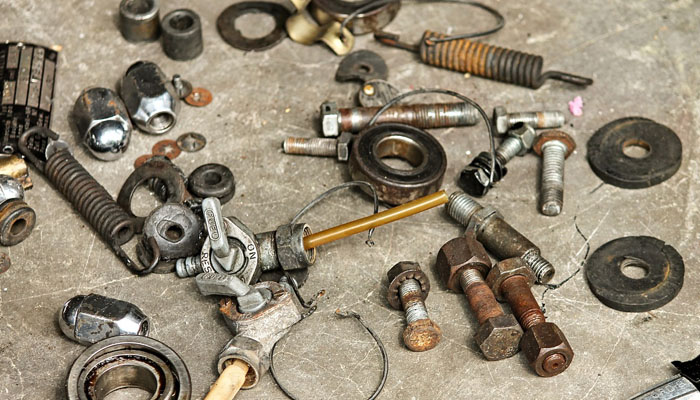Valves are essential in regulating the amount of air and fuel mixture allowed in the cylinders for combustion. It is true that the sleeves or guides on the valves keep the combustion gases from passing through them. However, the seals on the top of the valves keep the oil in the cover from getting sucked down into the engine. Typically, the seals are made from heavy-duty rubber, and they fit over the valve’s top inside a small collar. When they start to wear out or fail, they begin to show some evident and distinct symptoms.
Starting up a Cold Engine
You will notice the most common sign of cracked or worn valve stem seals just after starting a cold engine. If your car has been sitting overnight or over a length of time, residual oil pumped up earlier will start to collect on top of the head inside the valve cover. While the car is idle, the rubber valve seal will also start to cool, causing it to contract and leave a small gap. Once you start the engine, the residual oil gets sucked through the bad valve seal and into the combustion chamber. As such, the tailpipe will emit a bluish white smoke.
During Stop-and-Go Driving
Symptoms of bad valve seals appear when you are at stop lights or when you are driving through heavy traffic. Since the throttle remains closed, the levels of vacuum intake manifold will start to increase. Due to the high vacuum, the oil in the heads starts to gather around the valve stems. When you accelerate, the oil gets sucked past the eroding seal down to the valve guide, where it starts to burn in the exhaust. Because of this, huge clouds of bluish white smoke start to exit the tailpipe. The smoke will only disappear once you start cruising or you’re driving at highway speeds.
Performing Off-Throttle Braking
You can also see signs of compromised valve seals during off-throttle braking, especially when you are going down a steep path where the accelerator pedal stays static. With the vacuum level in the intake manifold increasing and the engine going on a downward slant, the oil starts to gather toward the front of the valve cover over its head. Once you push the accelerator after a long coast, the burnt oil will exit the tailpipe. In this case, the engine will continue to burn oil. The smoke emissions will only cease under normal cruise.
Checking your Oil Consumption
When you have bad valve seals, your vehicle will suffer from excessive oil consumption. You can easily detect loss of oil by using the oil dipstick. You must keep an accurate record of the oil level on the dipstick. This is also the reason why a notebook and a pen are some of the things you should keep inside the car’s glove compartment. If there are no oil leaks in the engine and yet there is excessive consumption, then this is an indication that your car has bad valve seals.
What to Do When You Have Bad Valve Seals
Whether you want to buy used Japanese cars or you need to repair or maintain your existing vehicle, it is always best to turn to professionals. Of course, there is a wealth of information available online, telling you how you can repair bad valve seals. However, if you are not confident enough to perform the replacement or repairs, you should not hesitate to bring your vehicle to a reputable auto service center.
On the other hand, when you want to buy used Japanese cars, you should turn to the experts at Carused.jp. Contact us today to learn how you can get your JDM vehicle at affordable rates!



